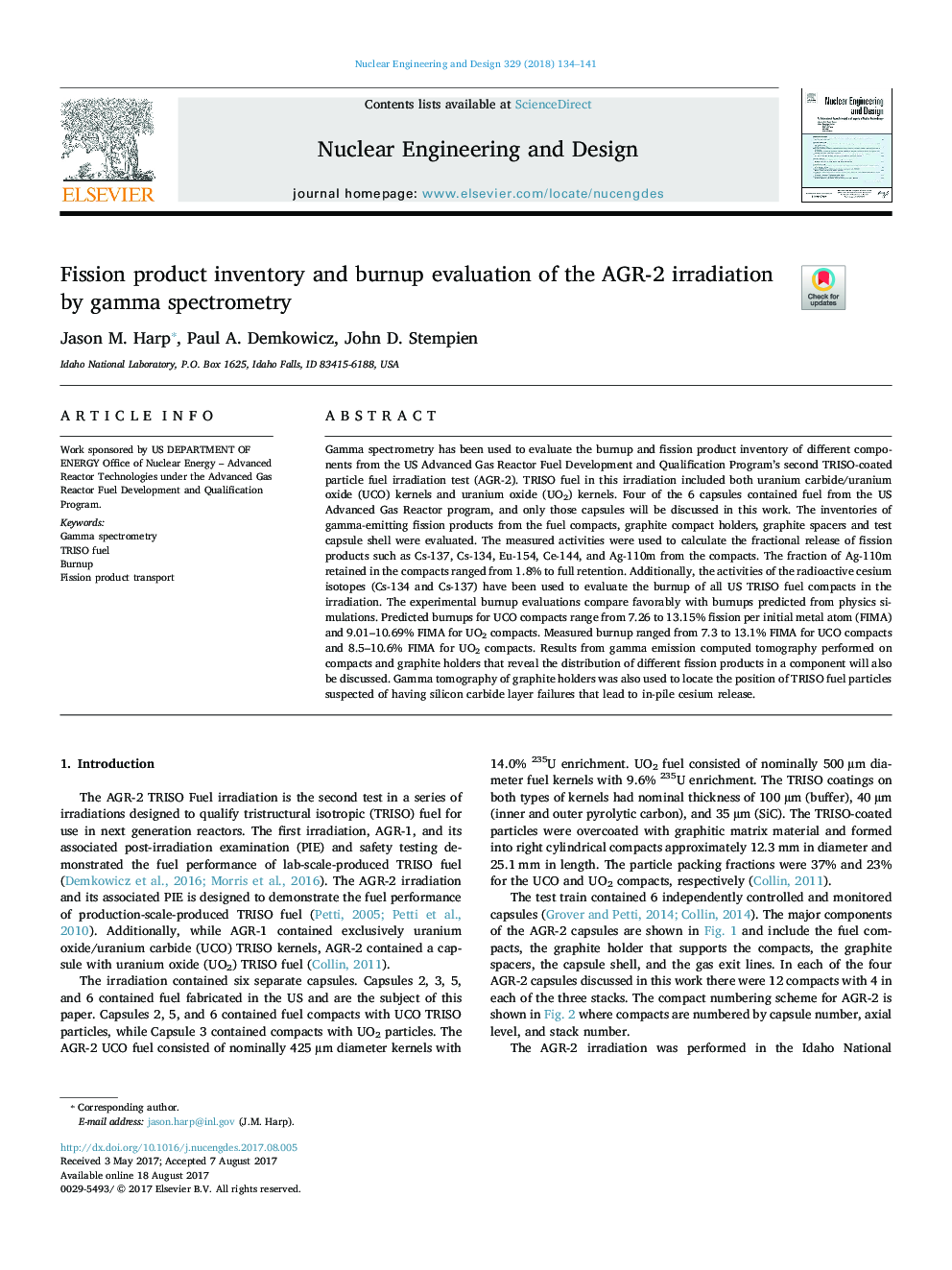| Article ID | Journal | Published Year | Pages | File Type |
|---|---|---|---|---|
| 6759313 | Nuclear Engineering and Design | 2018 | 8 Pages |
Abstract
Gamma spectrometry has been used to evaluate the burnup and fission product inventory of different components from the US Advanced Gas Reactor Fuel Development and Qualification Program's second TRISO-coated particle fuel irradiation test (AGR-2). TRISO fuel in this irradiation included both uranium carbide/uranium oxide (UCO) kernels and uranium oxide (UO2) kernels. Four of the 6 capsules contained fuel from the US Advanced Gas Reactor program, and only those capsules will be discussed in this work. The inventories of gamma-emitting fission products from the fuel compacts, graphite compact holders, graphite spacers and test capsule shell were evaluated. The measured activities were used to calculate the fractional release of fission products such as Cs-137, Cs-134, Eu-154, Ce-144, and Ag-110m from the compacts. The fraction of Ag-110m retained in the compacts ranged from 1.8% to full retention. Additionally, the activities of the radioactive cesium isotopes (Cs-134 and Cs-137) have been used to evaluate the burnup of all US TRISO fuel compacts in the irradiation. The experimental burnup evaluations compare favorably with burnups predicted from physics simulations. Predicted burnups for UCO compacts range from 7.26 to 13.15% fission per initial metal atom (FIMA) and 9.01-10.69% FIMA for UO2 compacts. Measured burnup ranged from 7.3 to 13.1% FIMA for UCO compacts and 8.5-10.6% FIMA for UO2 compacts. Results from gamma emission computed tomography performed on compacts and graphite holders that reveal the distribution of different fission products in a component will also be discussed. Gamma tomography of graphite holders was also used to locate the position of TRISO fuel particles suspected of having silicon carbide layer failures that lead to in-pile cesium release.
Keywords
Related Topics
Physical Sciences and Engineering
Energy
Energy Engineering and Power Technology
Authors
Jason M. Harp, Paul A. Demkowicz, John D. Stempien,
